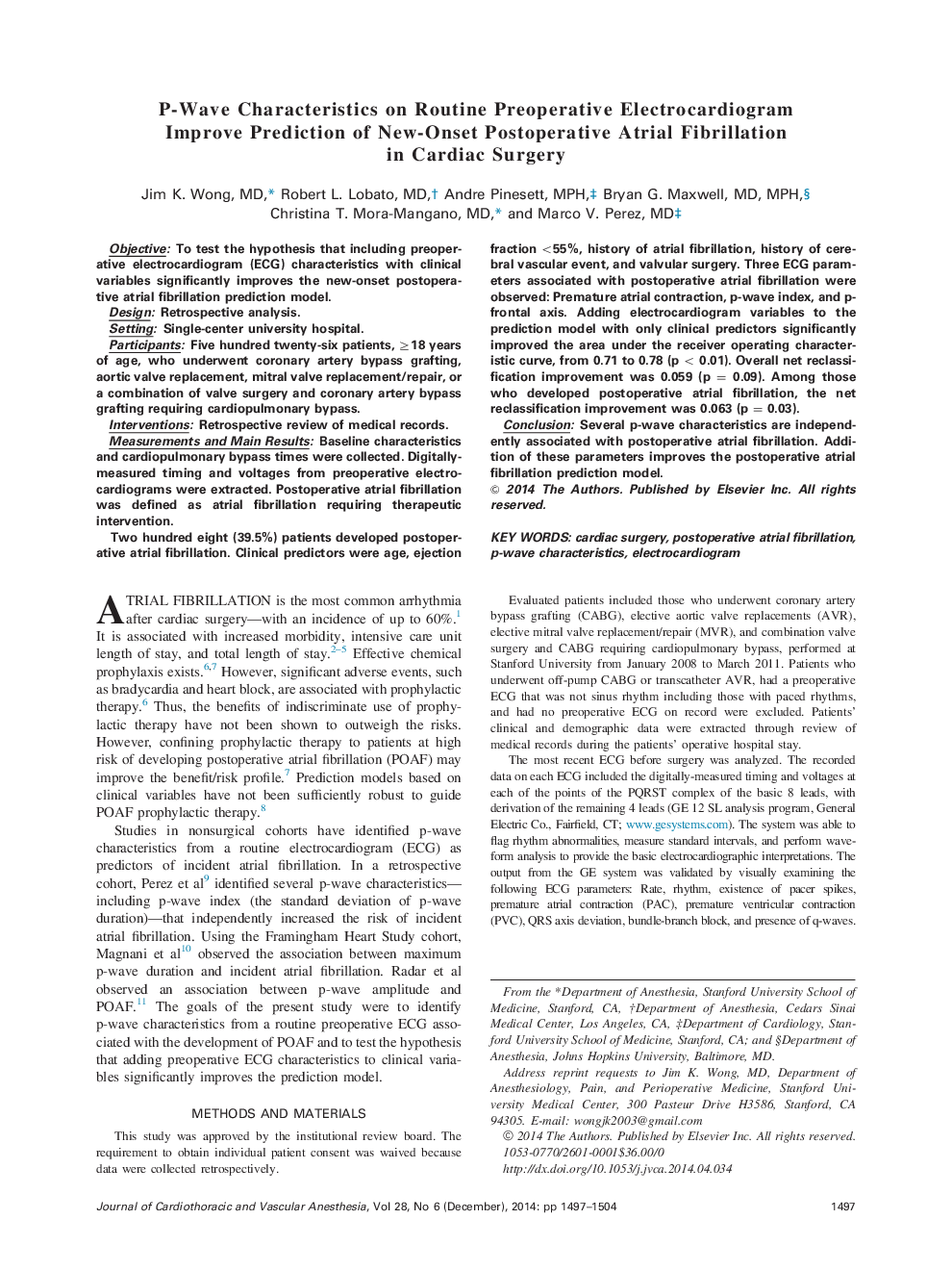| Article ID | Journal | Published Year | Pages | File Type |
|---|---|---|---|---|
| 5884071 | Journal of Cardiothoracic and Vascular Anesthesia | 2014 | 8 Pages |
ObjectiveTo test the hypothesis that including preoperative electrocardiogram (ECG) characteristics with clinical variables significantly improves the new-onset postoperative atrial fibrillation prediction model.DesignRetrospective analysis.SettingSingle-center university hospital.ParticipantsFive hundred twenty-six patients,â¥18 years of age, who underwent coronary artery bypass grafting, aortic valve replacement, mitral valve replacement/repair, or a combination of valve surgery and coronary artery bypass grafting requiring cardiopulmonary bypass.InterventionsRetrospective review of medical records.Measurements and Main ResultsBaseline characteristics and cardiopulmonary bypass times were collected. Digitally-measured timing and voltages from preoperative electrocardiograms were extracted. Postoperative atrial fibrillation was defined as atrial fibrillation requiring therapeutic intervention.Two hundred eight (39.5%) patients developed postoperative atrial fibrillation. Clinical predictors were age, ejection fraction<55%, history of atrial fibrillation, history of cerebral vascular event, and valvular surgery. Three ECG parameters associated with postoperative atrial fibrillation were observed: Premature atrial contraction, p-wave index, and p-frontal axis. Adding electrocardiogram variables to the prediction model with only clinical predictors significantly improved the area under the receiver operating characteristic curve, from 0.71 to 0.78 (p<0.01). Overall net reclassification improvement was 0.059 (p = 0.09). Among those who developed postoperative atrial fibrillation, the net reclassification improvement was 0.063 (p = 0.03).ConclusionSeveral p-wave characteristics are independently associated with postoperative atrial fibrillation. Addition of these parameters improves the postoperative atrial fibrillation prediction model.
